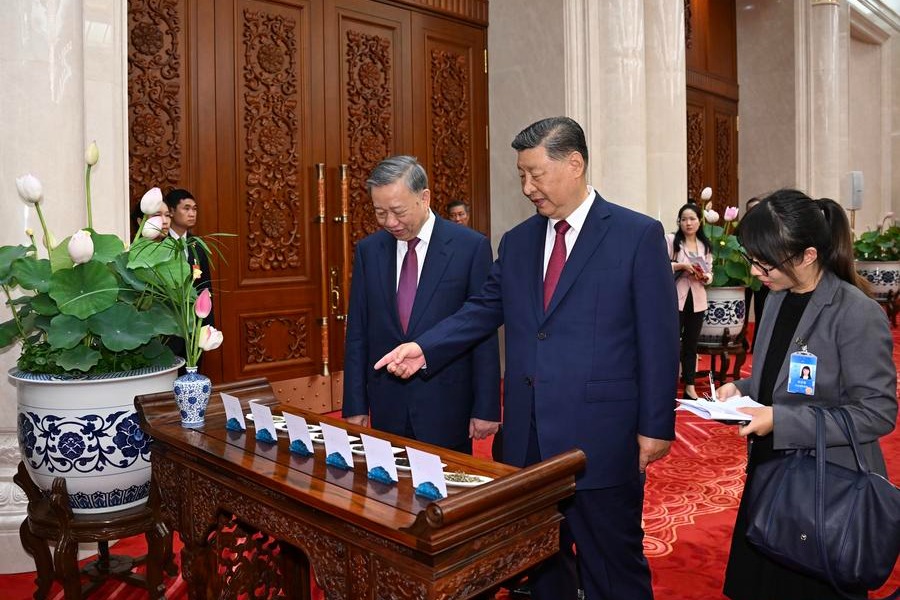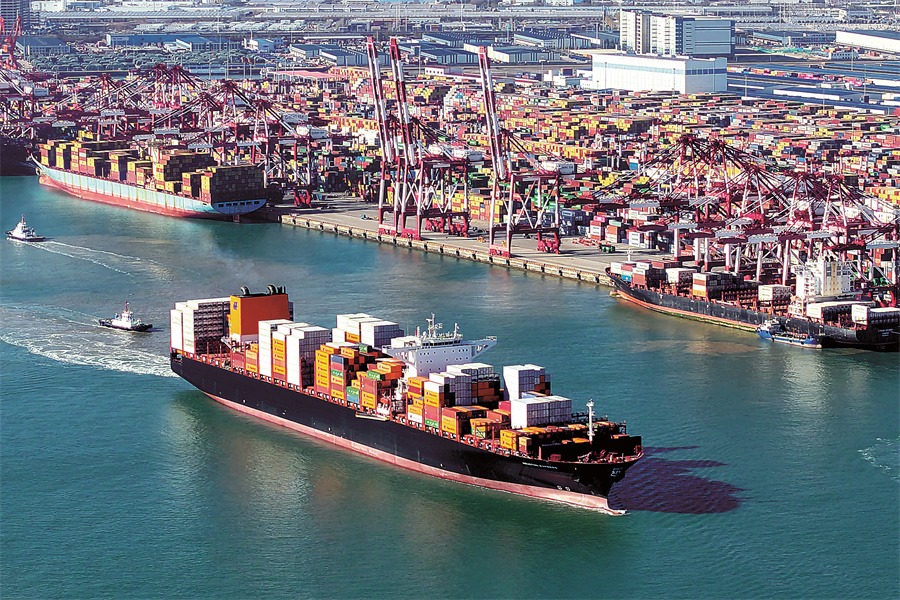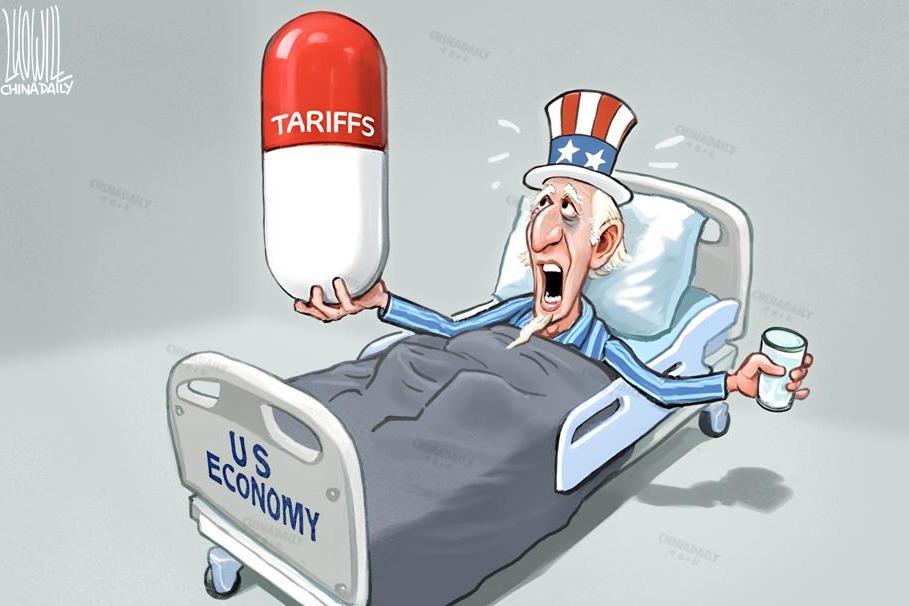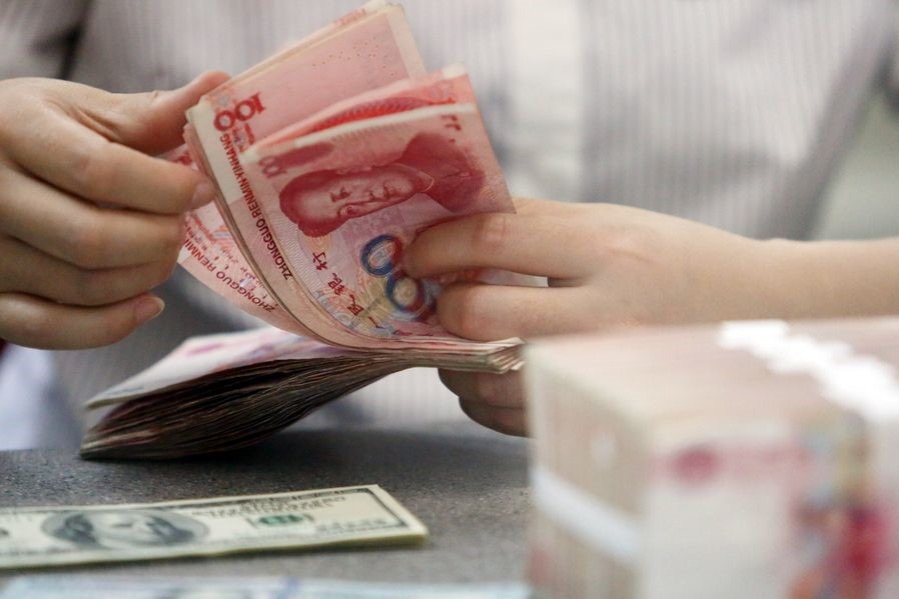Powering toward a clean energy future

 |
| A wind farm in Zhoushan, Zhejiang province. China's investment in clean energy in 2014 hit a record $89.5 billion, accounting for 29 percent of the world's total. [Photo/China Daily] |
Editor's note: The Communist Party of China will hold its 19th National Congress on Oct 18. In the runup to the meeting, China Daily asked two prominent experts to provide their views on developments in China and the country's global leadership.
In the field of photovoltaics-the study of converting sunlight into electricity, Pierre J. Verlinden's name shines like the sun.
Born in 1957, the Belgian-Australian engineer has published about 200 scientific papers, generated more than a dozen patents and held senior R&D positions in labs and PV companies across Europe, the United States and Australia.
In 2012, to help China build a clean energy future, Verlinden brought more than 35 years of expertise to his fifth continent, becoming the chief scientist at Trina Solar-one of the world's largest solar product manufacturers, located in Changzhou, Jiangsu province.
Since his arrival, Verlinden has helped the company break 15 world records in the solar energy industry, ranging from solar cell conversion efficiency to power output for solar panels.
In his office, Verlinden has five different types of full-size solar panels leaning against the wall. Above the panels, he has hung a photo of NASA's solar airplane, which he helped design, and his William R. Cherry Award-one of the most prestigious in photovoltaics.
His most prized creations, however, are kept in his bookcase. They are an advanced type of solar cell called Interdigitated Back Contact cells, or IBCs, which set a world record in May with an energy conversion rate of 24.13 percent, the most efficient silicon solar cell ever produced in China.
Unlike conventional solar cells, which have lines of silver electrical conductors running across the panel's surface to carry electricity to the batteries.
"IBCs essentially have these conductors integrated in the back of the panel, meaning more surface area to absorb sunlight and thus higher efficiency," he said.
The lack of surface conductors also means the panels look slick and minimalistic. IBCs are still at the experimental phase, but they have already earned the moniker of the "iPhone of solar panels", for their "elegance and efficiency", he said.
The ups and downs
IBC is just one of the leading innovations coming out of China's PV industry. For decades, China has been eyeing alternative energies, like solar and wind, to meet its economic needs, as well as to cut its coal dependence and pollution.
By 2040, China's electricity production by coal-fired power plants will drop from today's 73 percent to 43 percent, while wind will rise from 3 percent to 12 percent, and solar from 1 percent to 6 percent, according to a report by the International Energy Agency.
"We hope the proportion of solar energy can be even higher," Verlinden said. "China has changed from being a follower into a PV industry leader in the past 10 years, leading the world in PV innovation, solar energy production and market size."
In July, Wang Bohua, secretary-general of China's photovoltaic industry association, told an industry gathering that the solar industry is expected to install 60 gigawatts of generating capacity this year-a 12 GW increase compared with last year.
China already had a total of 101.8 GW installed solar capacity by June, after adding 24.4 GW in the first six months of 2017, Wang said. For comparison, a typical nuclear power plant has a capacity of 1 GW, Verlinden said.
Today, the Yangtze Delta region, which consists of Jiangsu and Zhejiang provinces, produces about 60 percent of the world's silicon solar panels, Verlinden said.
"There is no doubt that the center of gravity for the PV industry is in China. If you were a PV scientist in the 1970s, you would go to Silicon Valley, but now, you would come to China," he said.
Starting with a few small rural projects in the 1990s, China bounded onto the global PV scene just before the 2008 global financial crisis as local manufacturers boomed and eclipsed companies from traditional PV powerhouses, like the US and Germany, according to a report by ENF Solar, a PV information company.
However, China's surge was hit by oversupply issue in 2012 after too many new manufacturers flooded the industry in 2011, leading the number of producers to soar to more than 900. This resulted in a serious price crash as companies fought a cutthroat price war to keep market share, the report said.
At the same time, the global recession chilled demand from European markets-the primary destination for Chinese PV products, resulting in even smaller profits for Chinese companies. As a result, more than 400 Chinese PV companies closed their doors within a year, leading analysts to dub 2012 as China's "Great PV Winter".
"The PV industry is a game of managing cost," Verlinden said. "Since the technology has been around for decades, the bar of entry is low and anyone with sufficient money can set up a factory line and become the number one producer in no time.
"Yet, being number one in the industry typically does not last long, sometimes only two to three years, hence sustainability is much more important."
Lead with innovation
Although China's PV manufacturing has grown at a breakneck pace since 2007, Chinese products are still uncompetitive compared with other PV powerhouses like the US, Germany and Japan, according to a report by Stanford University.
As a result, China has increased efforts to attract foreign capital and experts to help the country innovate, and allow big banks to give massive loans to support the PV industry, Dan Reicher, one of the report's co-authors said in a seminar in March.
Verlinden was one of the first foreign experts brought in under the recruitment program created by the State Administration of Foreign Experts Affairs. The recruitment program began in August 2011, and is aiming to attract about 1,000 foreign experts in the following decade.
After 2012, China's solar industry rebounded due to surging domestic demand and from Japan, increased government support and quotas for solar energy, and more nontraditional energy investors, such as real estate developers, entering the industry, the report said.
Coupled with rising innovation and the global competitiveness of Chinese PV products, Verlinden said the rebound momentum has been the biggest development in China's PV industry in the past five years.
In recent years, however, as companies flocked to install massive, utility-scale, solar farms in the Gobi Desert and barren hills of China's vast North and Northwest, this created enormous inefficiency and waste because the infrastructure could not keep up, Verlinden said.
While these solar farms can produce large amounts of energy, "it has far surpassed the consumption capacity of the surrounding villages", and might not reach the most energy-hungry areas, such as the coastal cities, he said.
This excess energy will be wasted if not stored properly in batteries or transmitted efficiently to the national grid, Verlinden said.
Hence it is essential for China to integrate solar energy transmission into the national grid, and develop new and more efficient storing methods in the following years.
At the same time, China should also advocate for more residential use of solar panels. "In the future, households might be able to reduce their energy bills to zero, and even sell their excess energy to their neighbors or the national grid and make a profit," he said.































